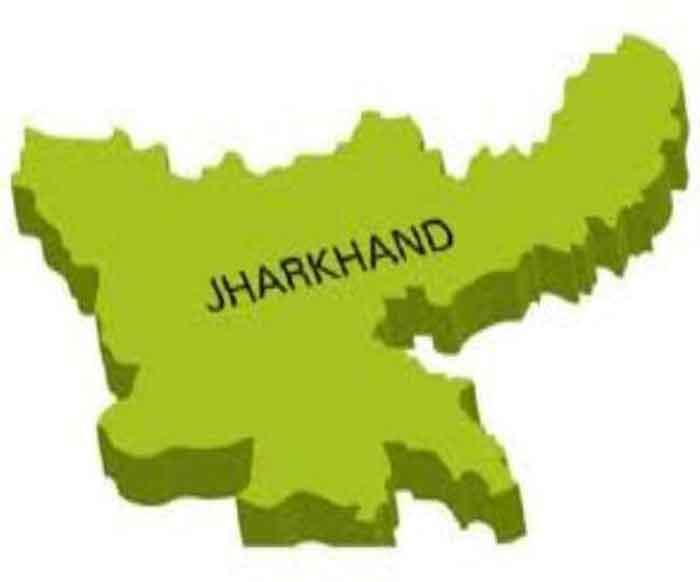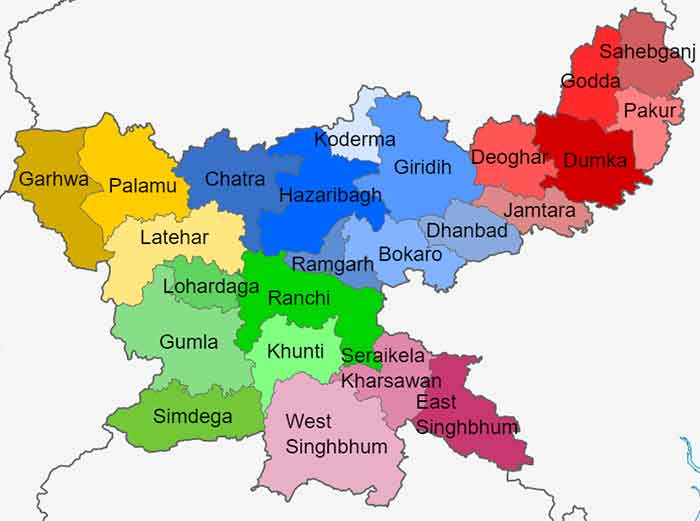
The story of all the newly created states in India is designed to fulfil the dreams and aspirations of the people who lived in agony and deprivation, were culturally deprived and were socio-economically exploited. This journey began with creation different states in November 2000 AD by the NDA government ruling at the centre. Jharkhand is one of those three, finding solace and satisfaction on November 15. That was a long-cherished dream of Adivasis (STs), Sadan (the non-Adivasi population), and other backward communities living on the Chotanagpur plateau.
On November 15, the state also recalls the birth anniversary of brave tribal leader Birsa Munda (mundas also refer to him as Bhagwan Birsa Munda), who led a significant tribal movement against the British Empire in the 1870s when he was arrested due to his heavy indulgence in the movement formation. Birsa Munda lived a concise life span and lived his last breadth in Ranchi Jail at 25 in 1900.
Etymologically, Jharkhand finds its root in Jha’ad, meaning forest plants—a land full of forests and nature with vivid flora and fauna. People speak in their lingua franca various local languages, including Hindi, Khortha, Nagpuri, Kurmali, and Panchpaganiya. The tribal communities use Santhali, Mundari, BHumiz, Ho, Kuddukh, Khadia and others; the list goes on. Such a diversified landscape, a rich historical heritage, and belonging to one of the primitive population groups do live in this state.
The land of this region became part and parcel of the British East India Company, shifted the history of natives into exploited natives, and rich natural resources were controlled by an outsider colony.
During the Mughal period, this region was known as Kukara. Still, after the year 1765, it came under the control of the British Empire and became formally known under its present title, “Jharkhand”—the Land of “Jungles” (forests) and “Jharis” (bushes). The colonisation of Jharkhand by the British East India Company resulted in spontaneous resistance from the local people. It is true to mention that the tribal population of this land presented a significant challenge to the coloniser, the British Empire. The history of resistance and protests learned from Santhal Hul, Coal, the movement of Birsa Munda, the Tana movement, etc., is a testimony to the tough resistance given by tribals of the state for their rights and freedom.
The people are still brave and strong to regain their rights and guarantees given constitutionally, if not facilitated in due process. In the last 23 years of governance, a lot still needs to be brought into the lives of the state’s poorest and most vulnerable communities.
The increased quota of STs in the state was enhanced to 26% while SCs had 10% (The Hindu, September 15, 2022), but how far the participation and employment of STs in government jobs are going will tell the story of the new state. In fieldwork conducted from April to September 2023 on the sanitation workers employed in municipal corporations, it was found that many workers are from SC communities who have traditionally been employed in this occupation. However, the field data shows a new trend wherein youth from STs are entering hospitals and nursing centres as cleaners and helping boys.
A state with a huge chunk of natural and mineral resources has yet to be able to provide primary access to health, education, employment and housing to the population living for centuries and decades in backwardness and deprivation. How far the present government, led by the UPA alliance, has been successful in reaching the poorest among the poor demands a macro-analysis on various developmental fronts. But insider observations and travels across the districts in the states reveal slightly improved social and economic conditions for the state’s native population.
In an irony and out of the blue moon, a state gets a buffer announcement from the union government for the launch of a ₹ 24,000-crore scheme for the welfare of the particularly vulnerable tribal groups during the election season across the five states in India.
What has happened to rich mineral resources like Uranium, Mica, Bauxite, Granite, Gold, Silver, Graphite, Magnetite, Dolomite, Fireclay, Quartz, Feldspar, Coal (32% of India), Iron, Copper (25% of India), etc.? Forests and woodlands occupy more than 29% of the state, amongst India’s highest.
Does the employment rate amongst STs be higher than that of SCs and OBCs? Do ST families have better housing and sanitation than their counterpart communities? Has urban growth helped the tribal population enhance their livelihood opportunities and quality of life? It demands diligent research. So far, populist governments have not systemically addressed these questions and have not envisioned how to create an inclusive policy for the Adivasis of the state, who still live in isolation, deprivation and at the margins of any other communities in the state.
It’s also comforting to recall that Momin, who fought for national culture and ideals, was similarly ignored by the government. Muslims in Jharkhand during the British Empire made major contributions, as described in a thorough essay. Below, Afsar Ali analyses these traits in detail: When Bihar State was created from Bengal in 1912, Chotanagpur Santhal Pargana became part of Bihar, while some districts of Jharkhand became part of Bengal. Asmat Ali was the first Jharkhand politician to predict Bihar’s danger. He believed the Jharkhand social culture would be threatened. He supported Jharkhand statehood in 1912. Since then, Jharkhand has prioritised social and cultural preservation. Since he helped strengthen the Jharkhand movement in 1919, Chiragh Ali is famous. Muslim agitators for Jharkhand were many. The Milli Gazette reported that Muhammad Murtaza Ansari from Chakdrapur, Ashraf Khan from Khellari-Ranchi, Muhammad Sayeed and Zuber Ahmad from Sonari-Jamshedpur, Wahab Ansari from Kothashila-Purulia, and S.K. Qutubuddin from Medinapur died for the Jharkhand revolution in 1989.
Abdul Ansari opposed the Muslim League’s request to partition India and create Pakistan. In response to the Muslim League’s call for a distinct Muslim homeland, he initiated the Momin Movement. The emergence of indigenous movements originated in the region of Jharkhand, where Muslims continue to experience socio-economic disadvantages and hardship, even 23 years after the foundation of the state. Currently, the irony persists for other marginalised and disenfranchised populations in the state.
Dr. Khwaja Mohd Ziyauddin, Associate Professor, Department of Sociology, Maulana Azad National Urdu University, Hyderabad E-mail: [email protected]












































